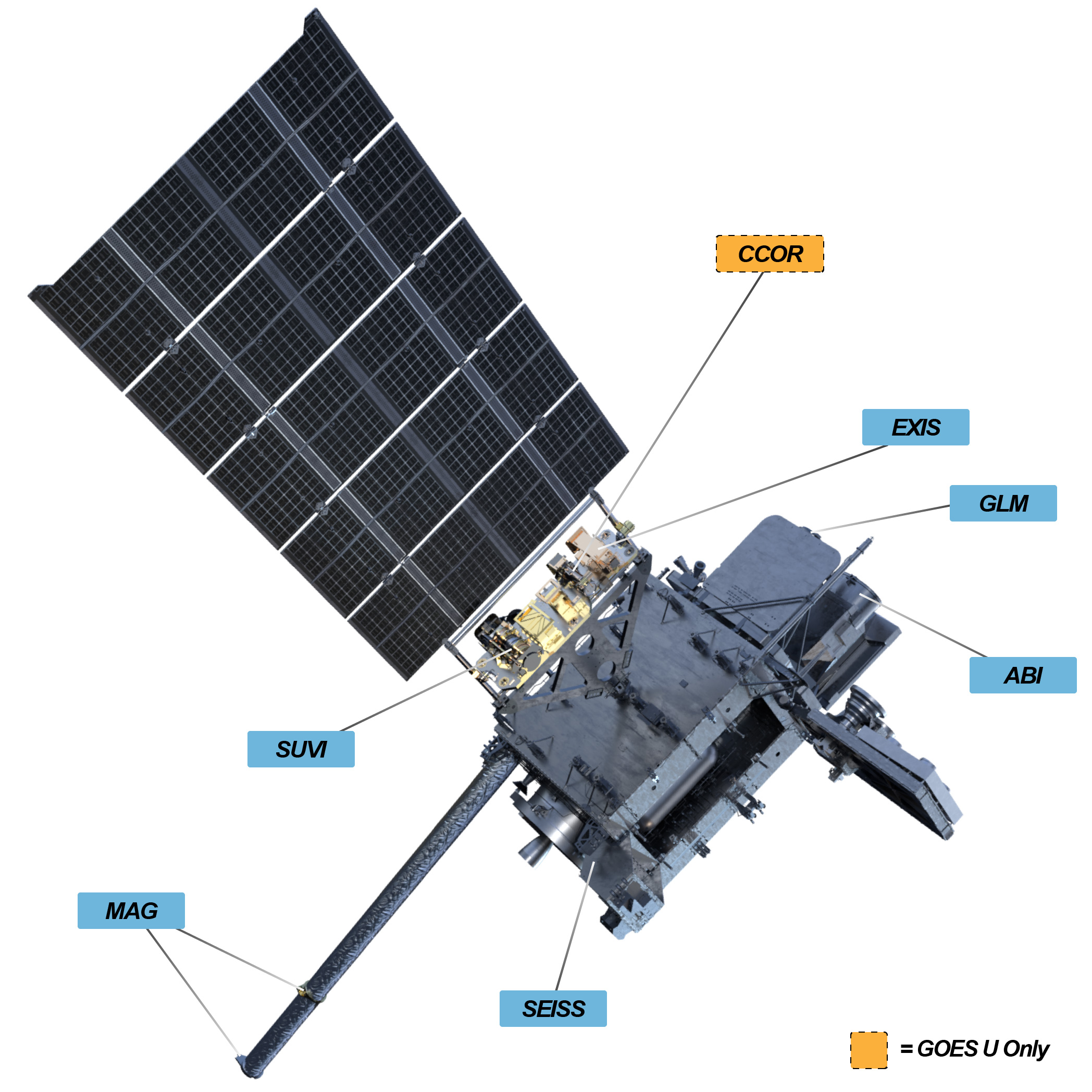GOES-R Series Spacecraft Overview

View Animations, photos, and videos of the spacecraft and the instruments
The GOES-R Series spacecraft bus is three-axis stabilized and designed for 10 years of on-orbit operation preceded by up to five years of on-orbit storage. The satellites are able to operate through periodic station-keeping and momentum adjust maneuvers, which allows for near-continuous instrument observations. Other notable performance elements include vibration isolation for the Earth-pointed optical bench and high-speed spacecraft-to-instrument interfaces designed to maximize science data collection. The cumulative time that GOES-R Series science data collection (including imaging) will be interrupted due to all momentum management, station-keeping, and yaw flip maneuvers is under 120 minutes per year. This is a nearly two orders of magnitude improvement compared to the previous GOES satellites. The spacecraft carries three classifications of instruments: nadir-pointing, solar-pointing, and in-situ.
The satellite driving requirements are:
- Spacecraft on-orbit life of 15 years with orbit east-west and north-south position maintained to within +/-0.1 degree
- Collect and transmit up to 100 Mbps instrument payload data from each location continuously
- Continuous rebroadcast function at L-Band up to 31 Mbps utilizing dual polarization
- Provide continuing services [Search and Rescue, Data System Collection, Emergency Manager’s Weather Information Network (EMWIN)]
Spacecraft Specifications:
- Dimensions: 20 ft x 18.4 ft x 12.8 ft (6.1 m x 5.6 m x 3.9 m)
- GOES-R, S, and T dry mass: 6,299 lbs (2,857 kg)
- GOES-U dry mass: 6,450 lbs (2,925 kg); GOES-U carries an additional instrument, CCOR-1, adding some mass
- GOES-R, S, T mass at launch (fueled): 11,446 lbs (5,192 kg)
- GOES-U mass at launch (fueled): 11,023 lbs (5,000 kg); GOES-U launch vehicle (Falcon Heavy) requires less fuel than the Atlas V that launched GOES-R, S and T